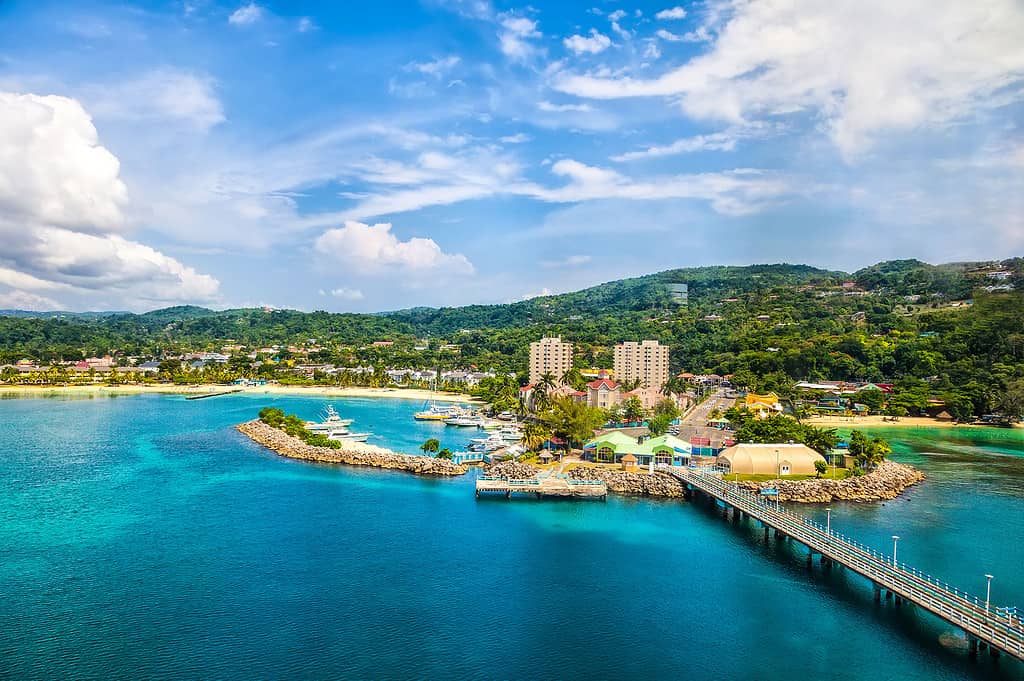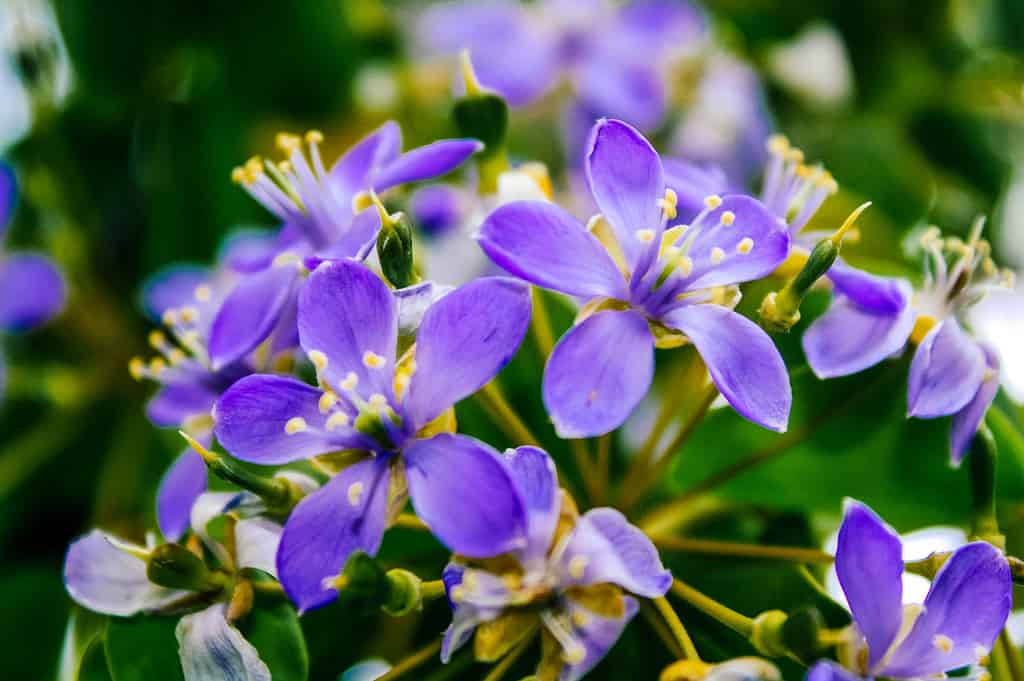The island of Jamaica is one of the most popular travel destinations in the Caribbean — and for good reason. Despite being the third largest island in the Caribbean, Jamaica is home to four mountain ranges. The island even sits right on top of an underwater mountain! However, not only is the island home to gorgeous beaches and landscapes, but it also has a unique and beautiful culture. Many visitors come to immerse themselves in both the beauty of the island and its local culture. As such a unique destination, it would make sense that the national flower of Jamaica would be an interesting pick as well.
The island sports a diverse mixture of both subtropical and tropical flora. So are you interested in learning about the national flower of Jamaica and what makes it special? Then keep on reading! We’ve got the rundown on this amazing plant and other cool facts about the island of Jamaica.
The Geographic Context for Jamaica’s National Flower
As we mentioned above, Jamaica is an island that is part of the Caribbean. It is also one of six islands that make up the Greater Antilles. The Greater Antilles consists of some of the most popular island destinations. As an island, Jamaica’s climate is tropical. However, the weather will change depending on where you are on the island. The beaches and coastlines have pretty high heat and humidity. Additionally, Jamaica also has four major mountain ranges. These ranges consist of the Cockpit Country, John Crow, Blue, and Don Figueroa ranges.
This may blow your mind, as many people simply classify Jamaica as a beach paradise. However, in the higher altitude locations, the temperatures are fairly lower and vary more. Additionally, the island also has a rainy season that lasts between May to June and October to November. Another fascinating fact about Jamaica is that the island has some of the most biodiversity in the Caribbean — only surpassed by Cuba. This is a pretty amazing thing when you consider how much smaller Jamaica is in comparison to Cuba and other islands in the Caribbean.
Despite such biodiversity, Jamaica managed to pick one flower above the rest and named it its national flower. Let’s discover what flower it is and other fun facts.

Jamaica is not only home to gorgeous beaches and landscapes, but it also has a unique and beautiful culture.
©iStock.com/Ruth Peterkin
Lignum Vitae: The National Flower of Jamaica
Lignum vitae is the national flower of Jamaica. Interestingly enough, it is actually a tree that blooms beautiful flowers. There are several other names that it is known by, such as Guaiacum officinale and gaïacwood. It is also part of the Zygophyllaceae family of flowering plants. This plant is said to have been commented on by Christopher Columbus, who admired its beauty. The tree is recognized by its short, compact appearance. It is native to the Caribbean and the northern coast of South America. The tree is also very slow growing as well. It typically grows to about 33 feet in height with a diameter that is usually 24 inches.
However, although it is a tree, it does bloom beautiful blue flowers. These blue flowers have five petals and are even lightly fragrant. They also produce fruit. The fruit is heart-shaped and is a bright yellow-orange color on the outside, with bright red flesh and black seeds. The flowering of this tree lasts for roughly a month and occurs throughout the year. The tree is considered an evergreen tree. Now that we have a better understanding of this tree and its beautiful flower let’s learn more about where it grows in Jamaica.

Lignum vitae is the national flower of Jamaica, and it is native to the Caribbean islands.
©k_lmnop/Shutterstock.com
Where Does Lignum Vitae Grow in Jamaica?
As an evergreen tree, the lignum vitae grows primarily in dry coastal areas. This is why this tree is native to the Florida Keys, Central and South America, West Indies, and the Caribbean. For example, in Jamaica, you’ll find this tree blooming in dry woodland areas on both the north and south coasts of the island.
What Is Lignum Vitae Used For?
This tree has been very important for many cultures. For starters, it helps to understand what the name lignum vitae means. When it is translated from Latin, the name actually means “wood/tree of life.” This name becomes very fitting when you start to understand the history behind this tree and how it served such a valuable purpose. To start off, the indigenous people of tropical America often regarded this tree with great reverence. This tree was used for medicinal purposes as well as being situated in many parts of their sacred woods.
All parts of the tree were used for medicinal purposes and many other uses, including the bark, body, fruit, blossoms, and leaves. It was used to treat various conditions, such as syphilis, when combined with mercury. Europeans would transport the gum of the plant to create medicine. It was even used as a way to treat grout. For Europeans, the name “tree of life” really makes sense when you see how much they depended on this tree’s strength. The wood of the tree is particularly strong and was used for propeller shaft bearings in all ships. This is because the wood is dense and is able to withstand erosion from sea salt. Additionally, the wood has also been used to make furniture as well.
However, the tree has been overexploited throughout the years and, in 2019, was listed as an endangered species by the IUCN. This has prevented a lot of international trade of this plant from occurring to help preserve it.

The lignum vitae is an evergreen tree that grows primarily in dry coastal areas.
©Annelise. A. Lords/Shutterstock.com
Other Native Plants and Flowers of Jamaica
Jamaica’s biodiversity is remarkable. As such, you’ll find tons of different flowers and plants growing in the nature of the island. For example, there are roughly 690 different fruit plants that grow in Jamaica. This includes fruits such as tomatoes and mangos. There are also sixty different species of orchids that grow on the island. No matter where you go on this beautiful island, you’ll be absolutely dazzled by all of the native flora that you’ll find all around you.
The photo featured at the top of this post is © YuRi Photolife/Shutterstock.com
Thank you for reading! Have some feedback for us? Contact the AZ Animals editorial team.






